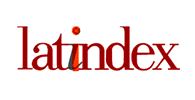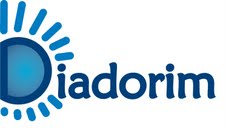PERFIL EVOLUTIVO DO CONDICIONAMENTO AERÓBIO E DA FORÇA EM POLICIAIS MILITARES
DOI:
https://doi.org/10.13037/rbcs.vol8n25.1028Keywords:
Policiais Militares, Desempenho, Força, Condicionamento AeróbioAbstract
O teste de aptidão física é aplicado anualmente em policiais militares, por intermédio dos testes de Cooper, flexão abdominal e trações na barra. Atribui-se como classificação: excepcional, muito bom, bom, regular e insuficiente. Devem ser considerados aptos àqueles que obtiverem, no mínimo, um resultado regular e os inaptos deverão ser encaminhados ao recondicionamento físico. Com isso o objetivo do estudo foi fazer um estudo diagnóstico da aplicação do TAF em oficiais da Polícia Militar do Estado do Rio de Janeiro, observando a manutenção de força e condicionamento aeróbio. O estudo consistiu na aplicação do TAF e na análise comparada deste com os últimos TAFs realizados em uma amostragem de trinta e um policiais, designados aleatoriamente na faixa-etária de 30 a 39 anos. Estipulou para cada variável a média estatística anual do desempenho entre os participantes da amostra obtendo para a variável teste abdominal: 2007 = 38,30; 2008 = 41,72; 2009 = 39,23; 2010 = 39,7. Para o teste de Cooper as médias: 2007 = 2171,15; 2008 = 2423; 2009 = 2430; 2010 = 2643, 33 e para o teste de tração na barra as médias: 2007 = 8,75; 2008 = 5,88; 2009 = 5,43; 2010 = 5,4. De acordo com as médias obtidas, foi encontrada como pontuação: abdominal- entre 90 a 100, Cooper 60 a 70 e tração 50 a 60 pontos, sendo classificado o desempenho como regular bom. Concluiu-se que a corporação apresenta níveis desejáveis de força e condicionamento aeróbio, visto que os valores encontrados superam o mínimo exigido em conformidade com a normatização da aplicação do TAF.Downloads
Downloads
Published
2011-02-02
Issue
Section
ARTIGOS ORIGINAIS
License
Policy Proposal for Journals offering Free Delayed Access
Authors who publish in this magazine agree to the following terms:
- Authors maintain the copyright and grant the journal the right to the first publication, with the work simultaneously licensed under a Creative Commons Attribution License after publication, allowing the sharing of the work with recognition of the authorship of the work and initial publication in this journal.
- Authors are authorized to assume additional contracts separately, for non-exclusive distribution of the version of the work published in this magazine (eg, publishing in institutional repository or as a book chapter), with the acknowledgment of the authorship and initial publication in this journal.
- Authors are allowed and encouraged to publish and distribute their work online (eg in institutional repositories or on their personal page) at any point before or during the editorial process, as this can generate productive changes, as well as increase impact and citation of the published work (See The Effect of Open Access).








